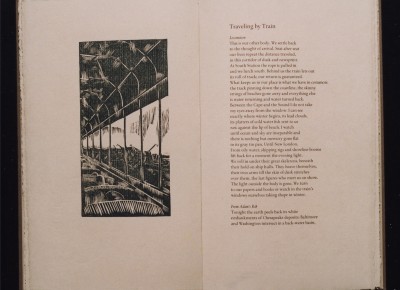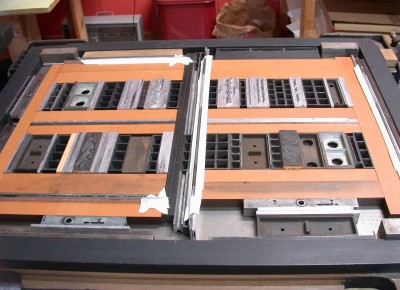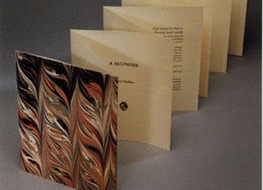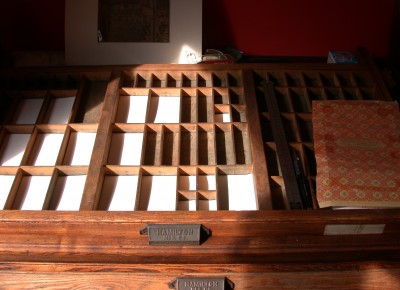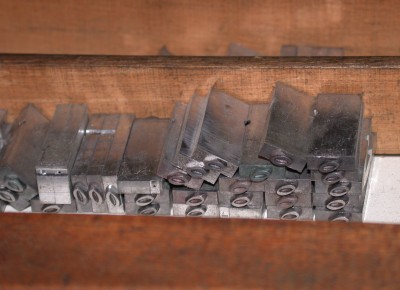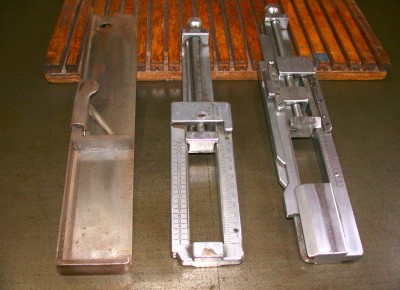Book design has a history that spans centuries and has gone through several application changes. Early books being first produced by hand, and coming after many other forms for holding recorded information, for the West began as the codex, and probably originating in Ethiopia, eventually came to be know as illuminated manuscripts prior to the invention of printing. It is hard to trace or state true origins as so much has been lost and where inventions occurred over time in several different places, and in some cases perhaps simultaneously. The Chinese probably invented paper (105 A.D.); and even printing from types cast in ceramic; but paper spread or appeared in a number of Middle Eastern and Mediterranean countries, while vellum or animal skin and papyrus where used for sheets before hand, vellum, and eventually paper were more successfully bound into codices or book forms.
With the codex came the basis for book design, as we know it, the double spread of pages. During the middle ages monastery scriptoriums produced libraries by hand, and later nobleman and renaissance royalty, books were the form to carry history and valuable information for those who could attain them. Here is where the origins of design are rooted, in the scribes geometrically laying out text blocks and imagery which would fit one of several golden proportions / means for creating beautiful book pages.

Proportions for book design or page design laid out geometrically.
These designs later were carried over to the printed page by the folio forms of type locked in the chase on the beds of early printing presses, and eventually to the large mechanical presses of multiple imposed page sheets, which when folded became signatures. The term signature comes form the catch words and letters, later binding marks, employed to guide binders in identifying the correct sequence of gatherings that made up each book.
A form in the press showing one page locked up in the press bed in the folio format.

above: A page of type locked in the bed of the handpress
Printing followed a design set up by calligraphers and scribes and eventually these artists were only used to highlight with initials or rubricate the many more pages that could be produced on the printing press.
Today the computer program digitally creates grids for type and images based on the forms (text blocks) of the printing press. Photography changed the printing trade as the lithographic processes took over the metal typographic (relief) printing process which had lasted for several centuries. Digital production has changed the landscape even further. Even though electronic processes continue to dominate pre-press and production, the term digital still reminds us of the origins in the handmade. One can still do a cast off and character count to determine type size, text block and page size, line length and the number of lines on a page, the preliminary steps to designing a book.
The production of books has always seen a division of labor. Ever since there were scribes copying texts by hand, to the renaissance printers such as Aldus Manutius, to the industrial revolution, dissemination more and more became primary consideration. Today large offset and the digital presses actually manufacture entire books in line by one or two sets of machines, in the case of digital,sometimes in in a fraction of the space it once took to house four color presses and binding equipment. But whether the quantities are large or small, there are several materials and processes, often done by different enterprises, especially in the case of limited editions. Paper, board, cloth, and printing on any number of these, can be considered elements of the design of any book, hard or soft cover, including the dust jacket for hard cover books.
In the days of Aldus, primarily one man oversaw all the treatments for any given publication’s printing and binding. Today, printing and binding can be done by different establishments, or by manufacturers that can take a book from pre-press to completed volume. The success of a design requires the work of many cooperating experts along the way, including design, editorial, and production management. A good designer needs to know something about all of the phases a project will go through, and needs to know who best can carry out a process that he cannot, in order to make all the work go smoothly.
For those who consider starting publishing or self publishing need to know that there are procedures followed in order to economically execute each phase of the project correctly and not repeat or have to redo any part along the way, which is where extra expense is incurred. It takes more than a computer program to design and plan the manufacture of a book, with consideration to the right weight and grain of stock for content and cover, the types of finishes for these, and the many design and editorial elements which effect reading and use of the book by the reader.
There are so many possibilities available to us because of technology, nonetheless, and the book form and style can be treated with high regard conceptually, out of integrity to the manuscript or content, whatever the subject or market. Find the folks out there who make it their business to provide you the best service, no matter what your level of experience may be, so that your book is well manufactured.
Book design may be considered by some to be the design for the layout of text (typography) and images on the pages, the contents of the book. As there are large numbers of paperback volumes on the market, cover design is often considered a separate treatment for the design of a book, given that the cover is really a marketing tool, as well as an illustrated elaborate title page. All aspects of the book need to be considered when planning a project.
